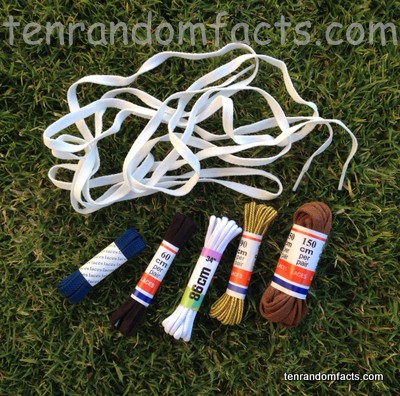Shoelaces are handy items for securing shoes.
- Shoelaces are lengths of cord used to fasten shoes or boots around feet, and are usually purchased in pairs.
- ‘Shoelaces’ are also known as ‘shoestrings’ and ‘bootlaces’, and they come in a wide variety of colours and decorative patterns.
- Shoelaces are typically woven through numerous holes, hooks or loops, most often in a criss-cross pattern, and tightened, to narrow the opening of the shoe over one’s foot.
- Shoelaces were originally made of leather, cotton or rope; while today, most laces are made of or include synthetic fibres.
- Shoelaces end with a sheath called an aglet, that is typically made of brass, plastic or copper, that enables ease of threading through the holes in the shoe.
- To complete securing, shoelaces are usually finished with a shoelace knot or a bow knot.
- Shoelaces range from 45 to 200 centimetres (18 to 79 inches) in length, and the lengths generally vary according to the quantity of holes in the shoe.
- Shoelaces have been used as early as 4000 to 3000 BC, to tie leather around one’s foot.
- There are accessories available for shoelaces, typically a decorative metal or plastic tab that is threaded onto a lace, and is known as a ‘shoelace charm’.
- Shoelaces are sometimes elasticised so that the shoe is easily slid off one’s foot without untying or loosening the laces.
- Bibliography:
Shoelace, 2014, Know How, http://www.madehow.com/Volume-6/Shoelace.html
Shoelace, 2014, Wikipedia, http://en.wikipedia.org/wiki/Shoelaces






